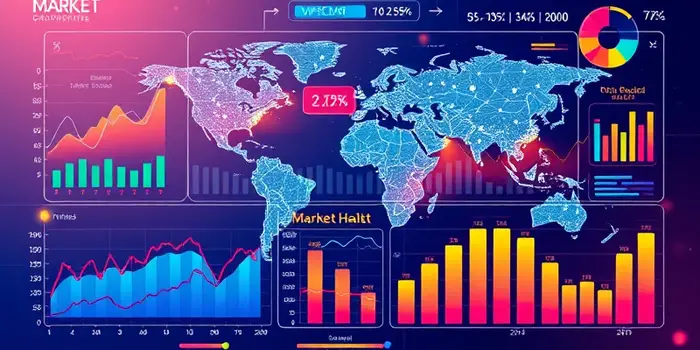
The global economy can feel complex and unpredictable. Yet, hidden within reams of data are reliable signposts that reveal the economy’s true pulse.
By understanding and tracking key metrics, you can make data-driven decisions that benefit your business, investments, and long-term planning.
Economic indicators are statistical measures that illustrate the health, direction, and momentum of an economy. They fall into three main categories:
Each type offers unique insights. Leading measures like building permits and stock prices hint at future shifts, while lagging metrics such as inflation rates validate those movements.
Below is a concise table of the most influential indicators for assessing market health, with the latest U.S. figures (mid-2025):
This table highlights essential metrics. To gain deeper insights, it’s crucial to know how to interpret each data point.
GDP (Gross Domestic Product) captures the total value of goods and services produced. Sustained growth signals prosperity, while contraction can foreshadow recession.
Unemployment Rate shows the percentage of the labor force seeking work. A rate around 4% suggests balance; too low can spark wage-driven inflation.
Inflation Rates (CPI & PPI) track consumer and producer price changes. Moderate inflation near 2% is healthy, but significant rises reduce purchasing power and can prompt monetary tightening.
Interest Rates set by the Federal Reserve influence borrowing costs. Lower rates stimulate spending, while higher rates tame inflation but can slow growth.
Consumer Confidence gauges sentiment toward spending and saving. High confidence fuels economic activity; a slump often points to caution and reduced demand.
Stock Market Indexes like the S&P 500 act as forward-looking signs, reflecting investor expectations about future earnings and economic trends.
Housing Market Trends—building permits and home sales—signal construction activity and consumer commitment. A slowdown can warn of broader economic softening.
Industrial Production measures factory and utility output. Rising figures indicate robust manufacturing, while declines may reveal hidden weaknesses.
Consumer Spending drives over two-thirds of U.S. GDP. Significant changes in household expenditures have immediate and far-reaching consequences.
The Conference Board’s Leading Economic Index® marries several indicators—new orders, financial conditions, and consumer expectations—to predict business cycle turns about seven months ahead.
The Coincident Economic Index® aligns closely with GDP movements by tracking payroll employment, personal income, and industrial production, offering a real-time snapshot of economic activity.
Beyond numbers, demographic and health trends also play a role. A healthier, aging population can boost productivity and economic potential, illustrating how interdependent market forces shape long-term outcomes.
Understanding metrics is only half the battle. Here are practical steps to leverage this knowledge:
By weaving these measures into your decision-making process, you harness monetary and fiscal policy insights, anticipate potential downturns, and position yourself for opportunities when the market shifts.
Economic indicators are more than abstract numbers; they are windows into the forces that shape employment, prices, and growth. Whether you’re a policymaker, investor, or everyday consumer, mastering these metrics empowers you to navigate uncertainty with confidence.
Make a commitment today to track key indicators, interpret trends, and apply your insights. With practice, you’ll transform raw data into a powerful tool for manage risk proactively and seize the next wave of economic opportunity.
References













